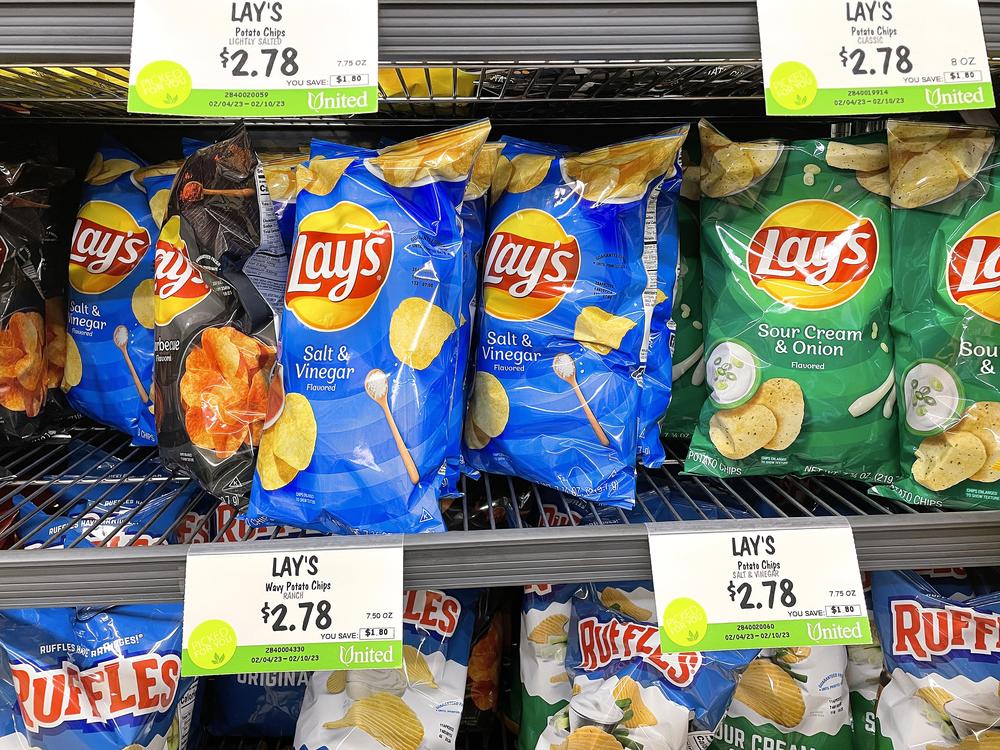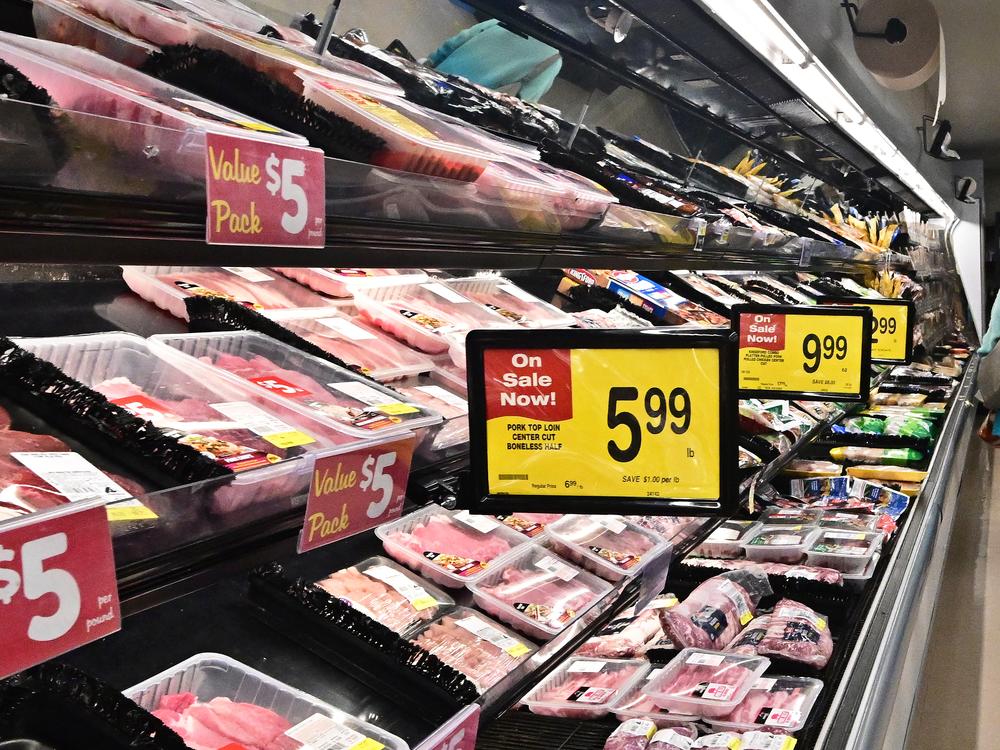Section Branding
Header Content
Food prices are no longer rising as much — but here's why it might not feel that way
Primary Content
Grocery prices are no longer climbing as much as they did in the last two years — but many Americans are still frustrated by what it costs to put food on the table.
Some people have apparently hit their limit. One of the biggest snack makers said this week that its sales fell this spring as grocery shoppers became more sensitive to rising prices.
Here are three things to know about food prices these days — and why it still feels more expensive at the checkout lane of your favorite grocery store.
What is going on with food prices?
It may not feel like it, but grocery prices have actually leveled off for the most part.
The latest consumer inflation report, out this week, showed grocery prices rose just a little over 1% in the last 12 months. That's a big improvement from the previous year, when prices jumped nearly 5%, and the year before that, when they soared by double digits.
However, leveling off is not the same as prices coming down, and the U.S. is still feeling the cumulative effect of those earlier increases.
And that leads to frustration for shoppers like Cindy Seinar, a retired autoworker in Lynchburg, Virginia.
"You go in for one thing, and you come out and it's $45," she says, describing her experiences at the grocery store.
And for Seinar, just like for many other Americans, the frustration is compounded by "shrinkflation." That's when companies reduce package sizes, meaning you get less than you used to for the same or sometimes even higher prices.
"Sugar is only 4 pounds," Seinar says. "You’re not even getting a 5-pound bag anymore."
Grocery prices are particularly noticeable because they are such a significant chunk of the typical family's budget, accounting for about 8% on average, according to government data. For lower-income families, it's often more than that.
How are people adjusting to higher prices?
For a while, many people just gritted their teeth and paid up — but Americans are starting to push back.
PepsiCo, which reported earnings this week, said sales of its Frito-Lay snacks actually fell during the most recent quarter. Some of that is because shoppers are balking at the higher prices by cutting back on chips altogether or by switching to cheaper store brands.
Amanda Whitworth stocks grocery shelves at a Target store in Florida. She often finds herself steering customers to the in-house bargains at the discount retailer.
"You may not ever have considered the Market Pantry bread, but it's $1.39 for a big loaf of it," Whitworth says, referring to Target's private label. "While that may not be someone's first choice, it's a quarter of the price of some loaves."
Whitworth also does the food shopping for her family and says she has made similar substitutions of her own.
"Before, we would have bought a big bag of frozen chicken nuggets for our son. And the particular bag went up three extra dollars," Whitworth says. "So we started making homemade chicken nuggets, which we'll probably never switch back because they're so good."
That sends a message to the big food producers. When PepsiCo and others start losing market share, they grow more cautious about pushing up prices. In some cases, they start to offer discounts — and that's one reason grocery prices aren't climbing as fast as they had been.
So are grocery prices finally going to come down?
To some degree.
The prices of some individual grocery items have come down. Fruit and vegetable prices have dropped over the last year, for example. So have milk and cheese prices.
However, the overall cost of groceries is unlikely to fall substantially.
But there is a silver lining. As grocery inflation slows, wages are catching up.
Over the last year, average wages have risen 3.9%, or about three and a half times as fast as grocery prices.
The typical worker now has to work about the same number of hours to buy a week's worth of groceries as in 2019, before the COVID-19 pandemic.
That's good news — even if for many Americans it doesn't feel that way.


